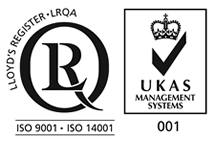
Main Products
Copyright 1998-2025 Firmetal Group All Rights Reserved. | Sitemap
Abstract: Compared with other kinds of superalloys, high temperature niobium alloy has the advantages of low density, high temperature (600~1600° C) specific strength, excellent cold and hot forming performance, good welding performance, etc., can be processed to form thin-wall and complex shape parts. Components such as the thrust chamber body extension of the attitude control orbital control engine for rocket engines, satellites, spacecraft and missiles are aerospace knots.
One of the important candidate materials for structural components. In order to meet the needs of space engines, China has successively developed a variety of niobium alloy structural materials for rocket engines on the basis of American and Russian niobium alloys, of which C-103 and Nb521 alloys are the most used. The progress of widely used alloys C103, Nb521 and low-density niobium alloys under development is introduced, and the existing problems in the research of aerospace niobium alloys are discussed. The future research direction of developing new niobium alloys with higher strength, higher strength and toughness and light weight, as well as high temperature and long life high temperature anti-oxidation protective coatings are prospeced.
Niobium alloys are usually divided into six categories according to strength grade and functional characteristics: the first type of high strength, low plasticity niobium alloy, the second type of medium strength, medium plasticity niobium alloy, the third type of low strength, high plasticity niobium alloy, the fourth type of high strength anti-oxidation niobium alloy, the fifth type of plastic anti-oxidation niobium alloy and the sixth type of anti-corrosion niobium alloy. According to the different density, it is divided into high density and low density niobium alloy. According to different functions, it can be divided into structural alloys, functional precision alloys and corrosion resistant alloys. Applied in the field of aerospace is mainly structural alloys, according to the strength is roughly divided into high strength, medium strength and low strength classes, taking into account the lightweight factors to develop low-density niobium alloy, in order to continuously improve the comprehensive performance of niobium alloy, also developed gap compounds (carbide, oxide and ammonia) strengthened niobium alloy.